48+ SAMPLE Marketing Meeting Minutes
-
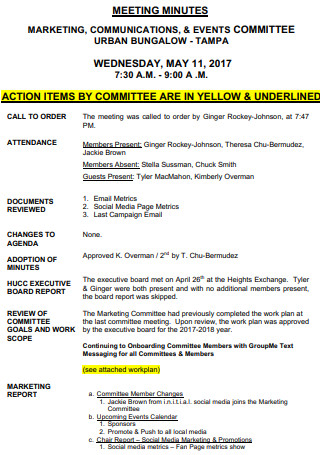
Marketing Communication Event Meeting Minutes
download now -
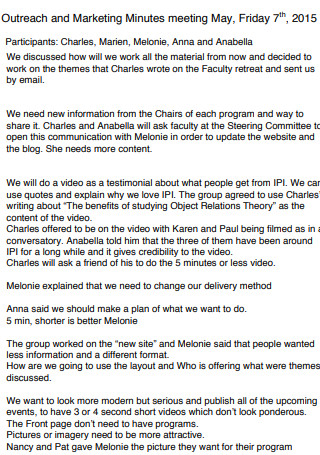
Outreach And Marketing Minutes Meeting
download now -
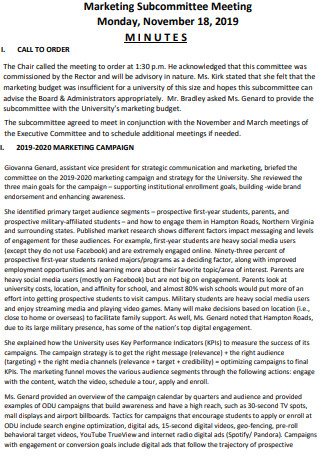
Marketing Subcommittee Meeting Minutes
download now -
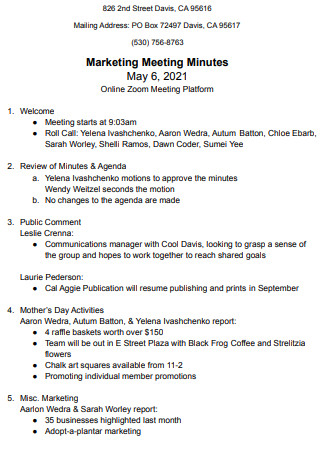
Marketing Meeting Minutes
download now -
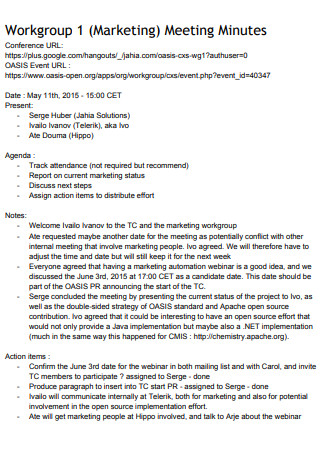
Workgroup Marketing Meeting Minutes
download now -
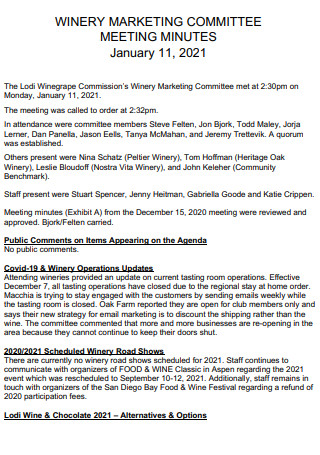
Winery Marketing Committee Meeting Minutes
download now -
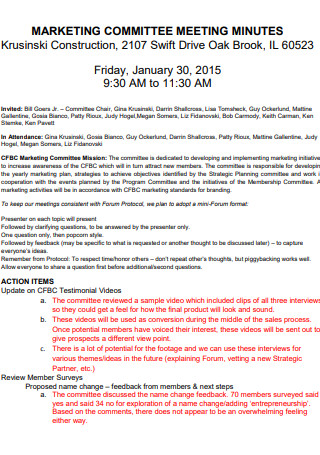
Marketing Committee Meeting Minutes
download now -
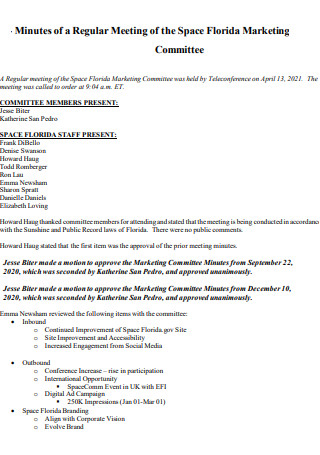
Regular Marketing Meeting Minutes
download now -
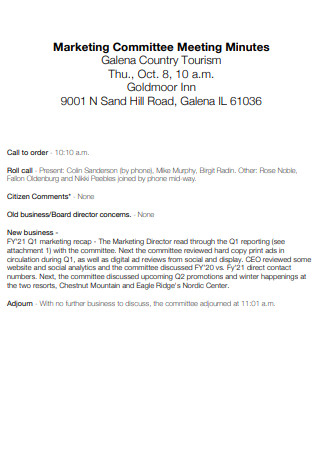
Sample Marketing Committee Meeting Minutes
download now -
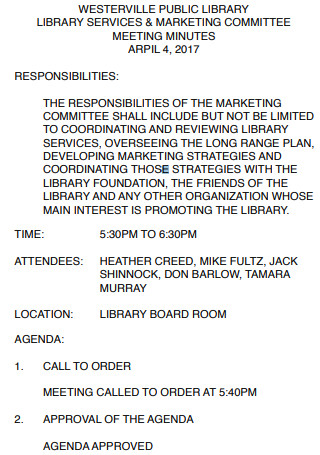
Public Library Marketing Meeting Minutes
download now -
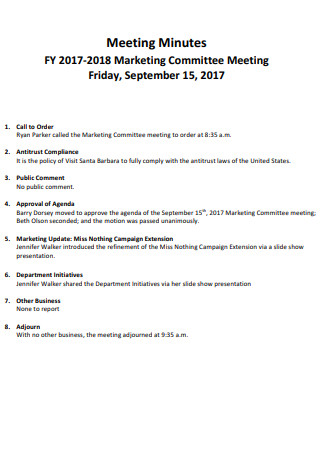
Marketing Committee Meeting Agenda Minutes
download now -

Sample Marketing Meeting Minutes
download now -
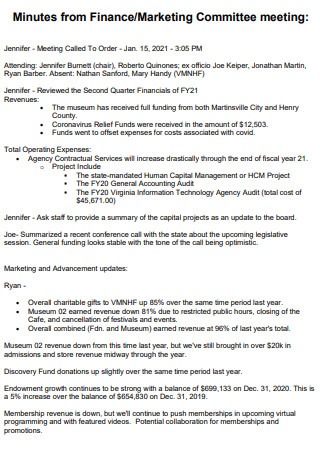
Finance Marketing Meeting Minutes
download now -
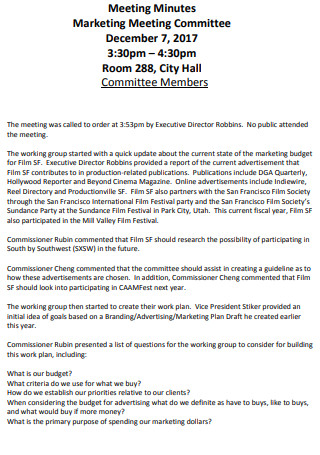
Marketing Members Meeting Minutes
download now -
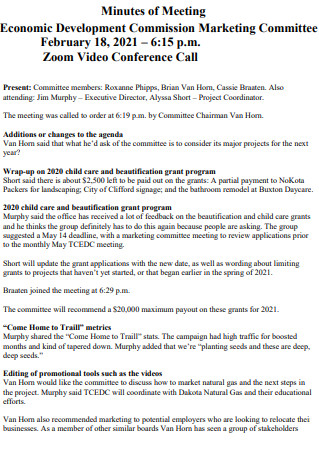
Economic Development Marketing Meeting Minutes
download now -
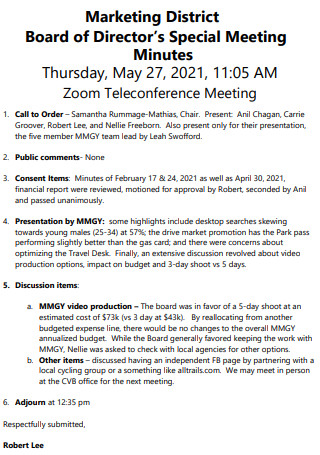
Marketing Special Meeting Minutes
download now -
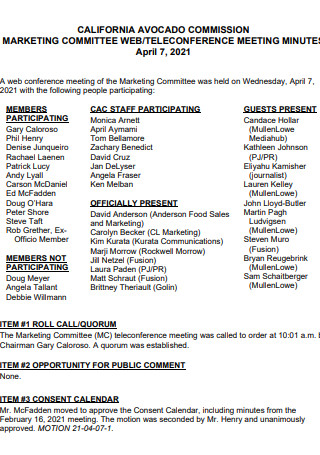
Marketing Teleconference Meeting Minutes
download now -

Domestic Marketing Meeting Minutes
download now -

Membership Retention Marketing Meeting Minutes
download now -
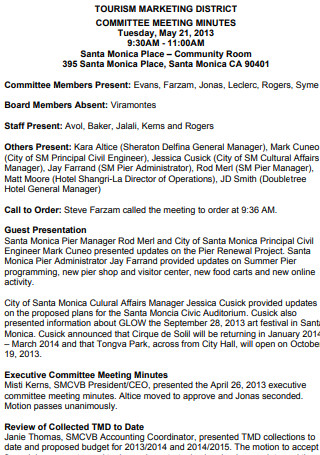
Marketing District Meeting Minutes
download now -

Marketing Board Meeting Minutes
download now -
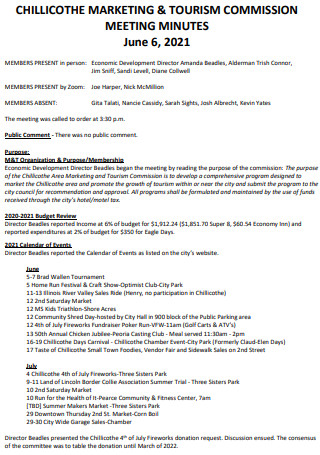
Marketing And Tourism Meeting Minutes
download now -
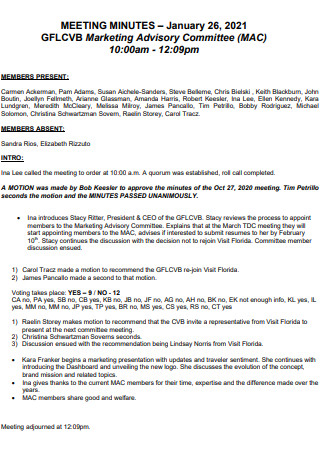
Marketing Advisory Meeting Minutes
download now -
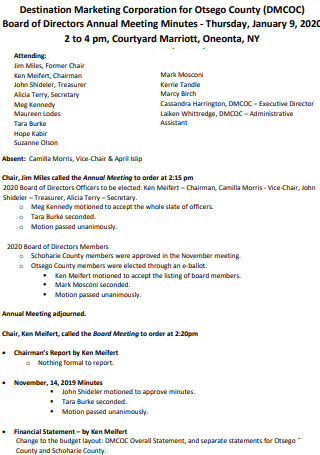
Destination Marketing Meeting Minutes
download now -
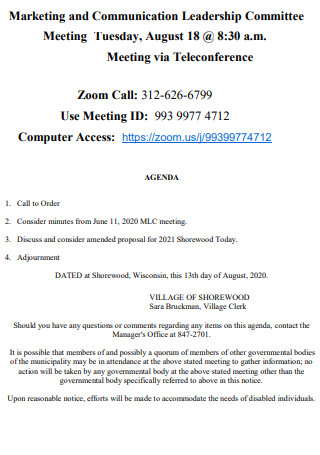
Marketing And Communication Meeting Minutes
download now -
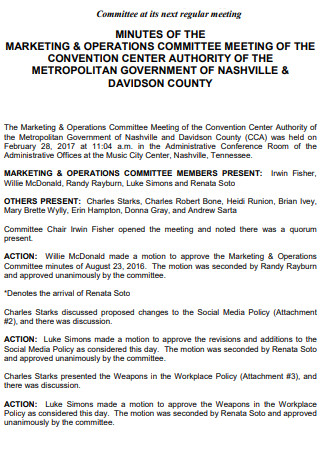
Marketing And Operations Meeting Minutes
download now -
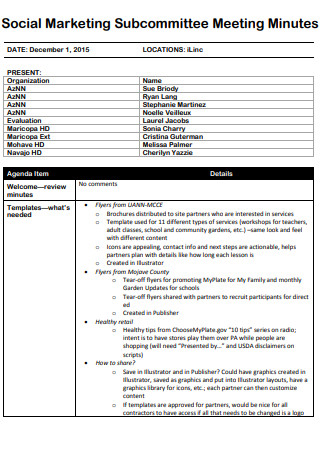
Social Marketing Meeting Minutes
download now -
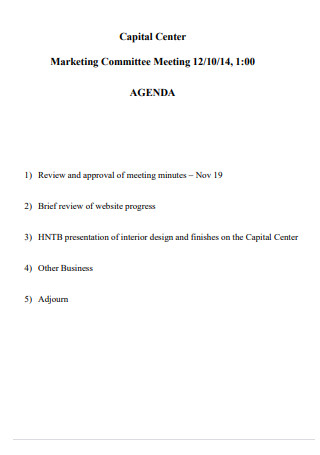
Simple Marketing Meeting Minutes
download now -
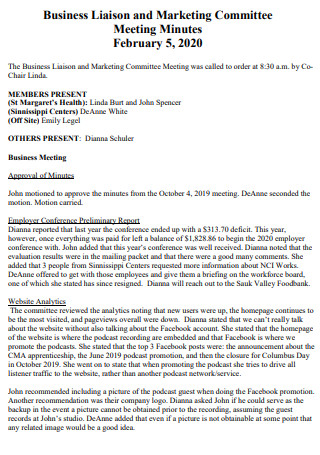
Business Marketing Meeting Minutes
download now -
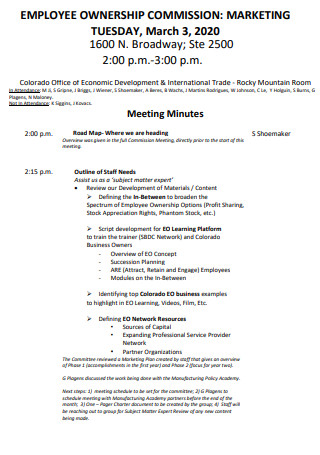
Employee Ownership Marketing Meeting Minutes
download now -
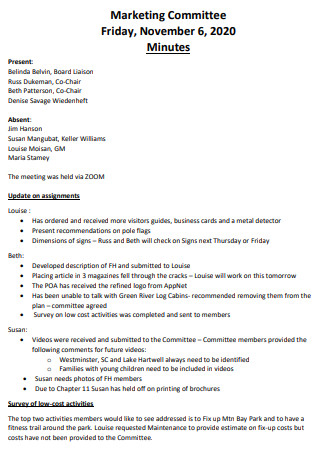
Formal Marketing Meeting Minutes
download now -

Final Marketing Meeting Minutes
download now -
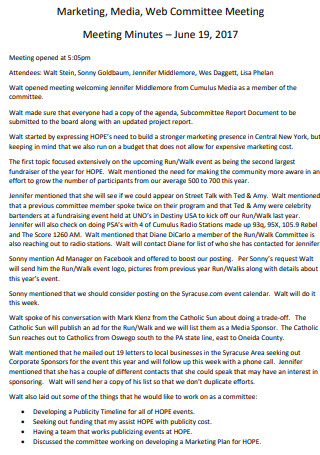
Marketing Media Web Committee Meeting Minutes
download now -
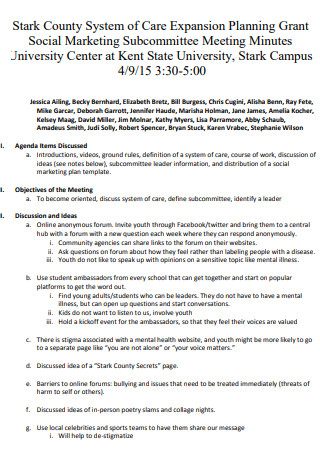
Social Marketing Subcommittee Meeting Minutes
download now -

Marketing Partnership Meeting Minutes
download now -
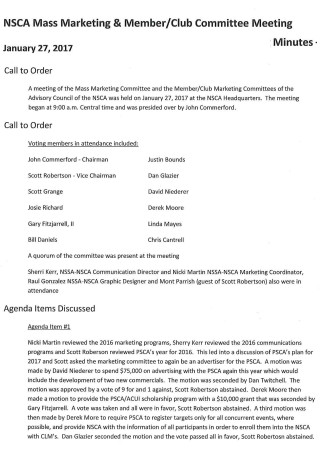
Mass Marketing Meeting Minutes
download now -
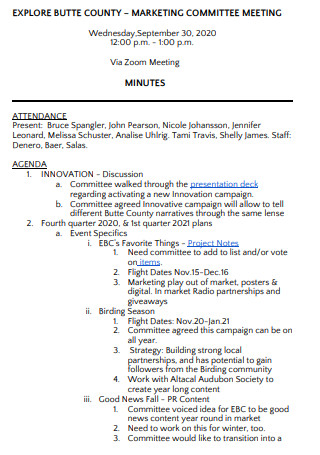
Marketing Meeting Minutes Format
download now -

Sales Marketing Meeting Minutes
download now -
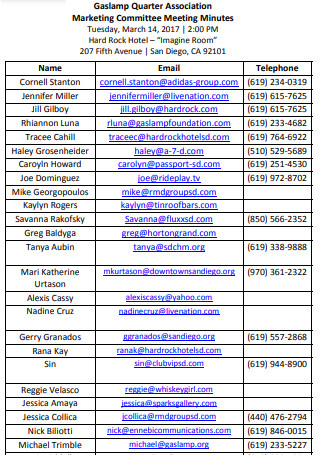
Quarter Association Marketing Meeting Minutes
download now -
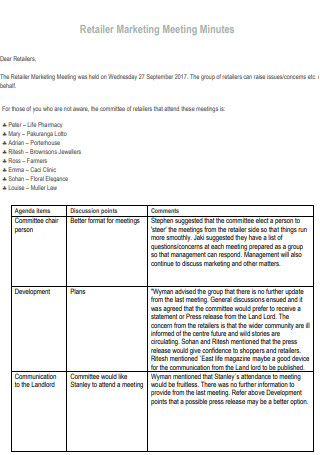
Retailer Marketing Meeting Minutes
download now -
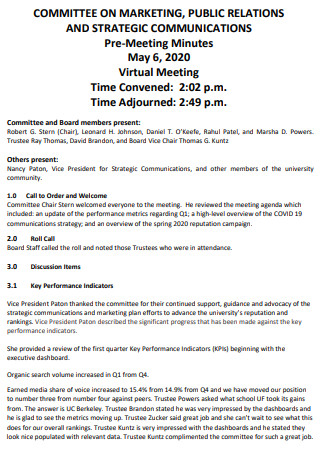
Marketing Pre Meeting Minutes
download now -

Marketing Resource Development Meeting Minutes
download now -
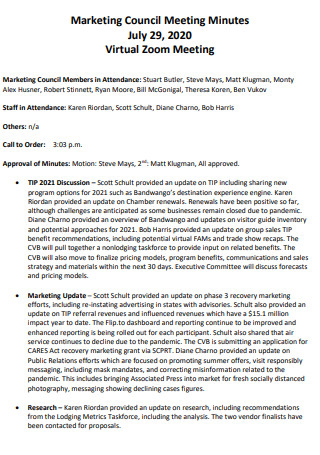
Marketing Council Meeting Minutes
download now -
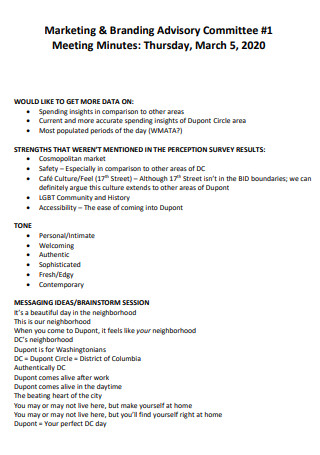
Marketing Branding Advisory Meeting Minutes
download now -
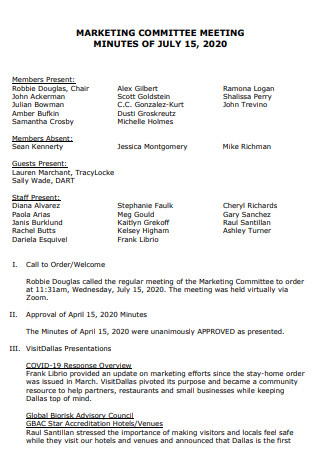
Standard Marketing Meeting Minutes
download now -
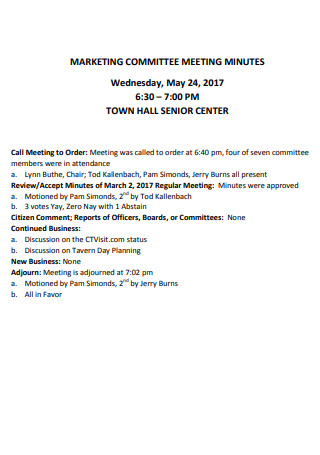
Basic Marketing Meeting Minutes
download now -
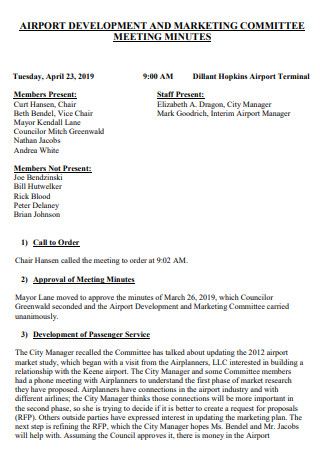
Airport Development Marketing Meeting Minutes
download now -
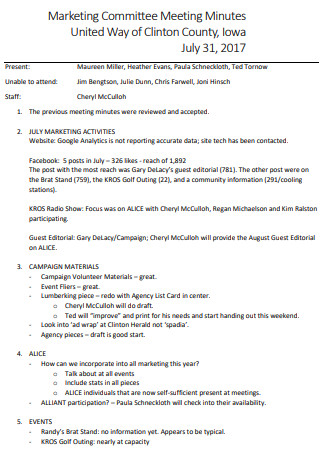
Monthly Marketing Meeting Minutes
download now -
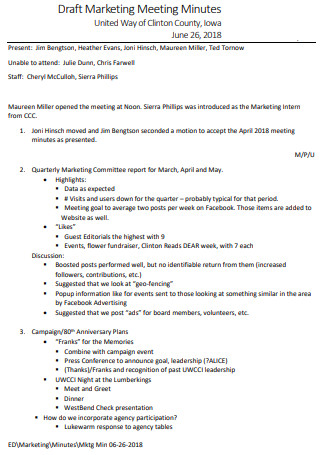
Draft Marketing Meeting Minutes
download now
FREE Marketing Meeting Minutes s to Download
48+ SAMPLE Marketing Meeting Minutes
Meeting Minutes?
Benefits of Marketing Meeting Minutes
Types of Meetings
How To Conduct an Effective Meeting
FAQs
When should meeting minutes be written?
What constitutes an action item in a meeting?
What legal standards apply to formal minutes?
What Are Marketing Meeting Minutes?
Marketing Meeting Minutes are frequently referred to for reference purposes. However, its function is not confined to the purpose for which it was specified. According to a survey, businesses spend approximately 15% of their time in meetings. If all of this time spent in meetings isn’t enough, most people regard meetings as ineffective. A staggering 37% of appointments are seen to be of no value to the organization. Utilize marketing templates as a guide for formatting so that your document layout can accommodate all of the materials required for meeting discussion assessment, tracking, and evaluation activities.
Benefits of Marketing Meeting Minutes
Meetings are critical for keeping your team and efforts on track. Whether you’re sharing information, gathering feedback, or making choices, holding weekly staff meetings has a slew of good consequences. While it’s not a stretch to suggest that the last thing you or your staff wants to do during a board meeting is taking minutes, it’s a critical and frequently necessary activity. The following are seven crucial reasons to have someone record accurate minutes at your next appointment:
Types of Meetings
Whether we like it or not, sales and marketing are inextricably linked. Due to their essential link, the two departments must collaborate. When sales and marketing are aligned, it is possible to define goals efficiently and build a healthier, more productive work atmosphere. The following are some suggestions for effective meetings:
Weekly Briefing
Weekly debriefs are an excellent way to begin aligning sales and marketing. It ensures that everyone is informed. These weekly meetings enable marketers to understand better how your sales staff is performing in terms of quotas and goals. Additionally, they tell sales teams about planned marketing campaigns and the type of content the team is developing. This enables the two departments to stay current with one another and even conduct joint performance analysis. An excellent idea for this type of meeting is to make it brief and concise. You do not need to reinvent the wheel; keep everyone informed about how their efforts will interact in the future.
Attend Events
Attending events can boost office spirit. Why not collaborate with your sales and marketing teams? They could participate in corporate conferences or speak at public events, for instance. However, you are not required to choose business-related events. Also, this technique enables the two departments to connect personally, which is not always possible in the office. They can share an experience, which can have a spillover effect on work performance and assist you in aligning sales and marketing. Attending an event allows employees to let off steam and contributes to a happier work environment. After all, those who work hard occasionally need to play hard as well.
Lunch Outings
Occasionally, a minor adjustment to the environment is all that is required to boost production. Going to a neighborhood restaurant for a meeting is an excellent approach to break out of the rinse-and-repeat cycle that both departments can fall into. This can assist you in aligning sales and marketing in a more relaxed setting simply by allowing them to unwind. Consider it a token of appreciation for their efforts: something both teams can look forward to.
Recognize Weaknesses
At times, it’s necessary to convene and honestly assess annual performance to determine what isn’t functioning. This strategy applies to both sales and marketing teams, both on an individual level and a systemic level. What are the two teams’ strengths and weaknesses as a unit? It might be as straightforward as conducting a SWOT analysis. This is true not only for job performance but also for internal operations. Identifying flaws is the first step toward improving the communication plan, customer service, and the overall process. Identifying weaknesses is also an excellent method to emphasize virtues.
Brainstorming Content
Both sales and marketing have the corresponding goal: to acquire customers. As a result, it’s a good idea for the two teams to collaborate on content ideas. Marketers can better tailor content to clients’ needs by answering frequently asked questions from the sales team. Additionally, sales teams can gain insight into the marketing process by examining the labor into blog articles, eBooks, and webinars. Combining these viewpoints can result in some fantastic ideas.
How To Conduct an Effective Meeting
If you’re like other people, the prospect of spending a whole day in back-to-back meetings can be terrifying. Meetings can be tedious, are frequently unneeded, and detract significantly from other work. However, when meetings are appropriately scheduled, they may be highly efficient and productive. The following are some straightforward methods for arranging extraordinary meetings.
Step 1: Determine if the meeting is necessary.
To begin, determine whether preparing a meeting is truly essential. We frequently believe that the best approach to communicate information or discuss is through a formal meeting. However, suppose your message can be given through email, conference call, or just by rallying a few folks in your office for 15 minutes. In that case, it’s generally best to forego the formal meeting entirely.
Step 2: Invite people who are required to attend.
Have you ever been called to a meeting and questioned why you were there halfway through? That is not the way to conduct a productive discussion. Is it necessary for someone from accounting to attend the meeting to answer budget questions? Then invite one accounting professional who is qualified for that duty. If you need to inform a colleague or supervisor of what was discussed during a meeting, you do not need to invite them to the meeting itself. Write a meeting recap and submit it to them following the meeting. They will enjoy the time savings, and you will be satisfied that they are fully informed of discussions, as you have documented them.
Step 3: Send reminders for meetings.
Life is hectic, and schedules quickly fill up with scheduled activities. Two days before your meeting, send a follow-up meeting reminder. Those who indicated an interest in attending will clarify whether they can still go or whether their plans have changed and you need to reschedule.
Step 4: Have a plan.
To arrange effective meetings, you must first determine the subject matter to be covered. What is the meeting’s purpose? What are your objectives? Prepare an agenda for the meeting in advance and give it to attendees. Indicate the start time and offer a brief list of the subjects that will be discussed. Avoid clogging up your meeting with a too lengthy, detailed agenda. Indicate by name any individuals who will be tasked with reporting on a particular subject. Bear in mind that this is critical not just for those in attendance but also for you. When you create a plan, you’ll find it easier to keep on track.
Step 5: Be specific about your expectations.
When notifying attendees of the meeting for the first time, be explicit about the gathering’s purpose and your expectations. Is the meeting going to be centered on a presentation? Will attendees be required to take notes? Or is this a brainstorming session in which participants are expected to bring ideas and suggestions? Employees in some business environments are not required to engage; they listen and return to their workstations. Other businesses allow employees to participate freely. In today’s collaborative workplaces, interaction and idea exchange are not only encouraged but frequently the primary objective of the meeting. While you’re outlining your expectations, this is a perfect moment to send out any necessary reading or materials you’d like attendees to peruse. This way, they’re prepared, and there are no surprises when they arrive at the conference.
Step 6: Begin on time.
Starting on time is critical, both logistically and productivity-wise. If you are the type of person who always arrives on time for meetings, you understand how annoying it can be when things do not get started as attendees trickle in. What inevitably occurs is that going forward, everyone recognizes that these meetings will never begin on time, and thus everyone begins arriving late. Take control of the meeting. Commence immediately at the specified hour. Close the door and start. Stragglers will quickly understand that they have arrived late, and they should make that error just once. Furthermore, everyone must return to work at some point, and you do not want to disrupt the entire workday.
FAQs
When should meeting minutes be written?
Write the minutes as quickly as possible after the meeting while everything is still fresh in your mind. Reread your outline and, if required, include additional concept notes or clarifications. Additionally, verify that all decisions, acts, and movements are documented.
What constitutes an action item in a meeting?
An action item from a meeting is a task issued to one or more team members who attended the meeting. Action items are the next steps needed to accomplish the objectives established during a meeting.
What legal standards apply to formal minutes?
Minutes are legal records that serve as a record of any conversations held during a meeting. The minutes should include the title, time, date, and location of the meeting, the names of attendees, apologies and guests, the subjects discussed, actions necessary, and the date of the next meeting request.
When creating the layout for your marketing meeting minutes, you must take a systematic approach. It is critical that your primary marketing meeting minutes example is organized, which is why you must be meticulous with how you offer all meeting minutes facts. Your marketing meeting minutes might include all critical data reports and subject issues discussed and agreed upon during a particular meeting discussion. Utilize marketing meeting minutes template to ensure that the marketing meeting minutes layout effectively specifies meeting details in a suitable, clear, and understandable manner.
